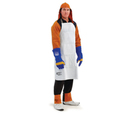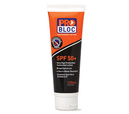Fire Resistant Clothing - What You Need To Know

Who needs Fire Resistant (FR) clothing and why is it so important?
Who needs it? Anyone who works with a risk of ignition, be it arc flash*, flash fire, molten metal etc in the workplace. For instance, anyone who works in a foundry or refinery environment, dealing with flame cutting and welding, firefighters, any one in an aluminium casing or petrochemical industry, as well as electrical utility and the chemical, oil and mining industries.
Normal flammable fabrics and garments will burn away from the point of ignition with an increasing rate of flame spread and continue to burn even after removal of the ignition source until they are extinguished or all flammable material is consumed.
Flame Resistant (FR) fabrics and garments are intended to resist ignition, prevent the spread of flames away from the immediate area of high heat impingement and to self-extinguish almost immediately upon removal of the ignition source. Flame resistant garments are NOT fire proof and WILL NOT provide significant protection from burn injury in the immediate area of contact with the ignition source.
"ARC Rated " Flame Resistant garments WILL:
- provide protection against clothing ignition and sustained flame spread
- insulate the wearer from the thermal hazard thus reducing or eliminating any 2nd
or 3rd degree burn through the garments.
The National Fire Protection Association (NFPA) Standard NFPA 70E is a "Standard for Electrical Safety in the Workplace" meant to protect those working around potential arc flash hazards. A hazard risk assessment is performed to determine the appropriate level of protective gear.
* Arc Flash (Electrical) - the light and heat produced from an explosive electric arc supplied with sufficient electrical energy to cause substantial damage or harm, fire or injury which lasts under 1 second but can reach up to a staggering 35,0000F. The Arc Flash explosion will deliver a certain amount of heat energy over a certain distance which can be measured & rated at certain levels in units of "calories per cubic centimetre".
A value of the heat energy necessary to pass through any given fabric to cause (with 50% probability) a second or third degree burn is the ARC Rating.
Arc Rated protective clothing protects from arc flash and electric arc hazards. There are 4 rated levels of flame resistance and, put simply, the ARC rating determines the protective characteristics of protective fabric.
- The higher the ARC rating value the greater the protection.
Manufacturers of fire resistant garments are required to indicate the ARC rating or Arc Thermal Protective Value (ATPV) of the garment. This rating may also be expressed as the Energy of Breakopen Threshold (EBT) if the fabric breaks open. Again, the higher the value the greater the protection.
Each level is considered a "category" or Hazard Risk Category (HRC). The HRC is the level of arc flash protection clothing you must wear to protect against a minimum level of measured incident energy.
** The higher the HRC level the greater the protection.
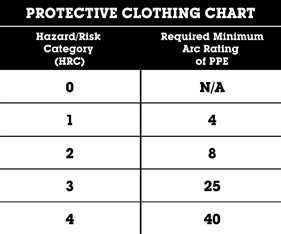
If you work in a fire hazard environment you should familiarise yourself with the ARC Rating and HRC required for your fire resistant garments. Don't take chances. Be informed and protect yourself and your workers from the devastating effects of fire hazards in the workplace.
For further information you should refer to the National Fire Protection Association (NFPA) Standard NFPA 70E for Electrical Safety In The Workplace.
To visit the Flame Resistant Workwear section Click Here.
Uniforms & Clothing
- *CARE PACKS*
- *SANITISERS*
- NEW PRODUCTS
- Aprons
- Casual Clothing
- Chef Wear
- Corporate Suiting
- Hats
- Hospitality
- Kids Wear
- Medical, Health Care and Beauty
- Office Wear
- Socks
- Sporting
- Workwear
- Workwear Hi Vis
- x CLEARANCES
Safety Items
Promotional Items
Print & Signage
Buy Specials
Buy Gifts

Contact Details
Hot Cotton33 Sarich Court
Osborne Park WA 6017
Phone: 61 8 9244 5566
Email: here
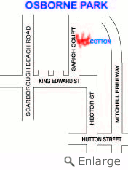 Hot Cotton Kewdale
Hot Cotton KewdaleImola Business Park (next to Bankwest)
cnr Kewdale Rd & Abernethy Rd
Kewdale WA 6105
Phone: 61 8 9353 6666
Email: here
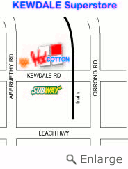


Quick Find
Use keywords to find the product you are looking for
Member Login
Email List
Featured Products
 Google+
Google+


